The rise of Sum 41, a collection of teenage punks from Exeter High School who banded together in the early 2000s, is an unlikely Cinderella story, but one of Canada's most notable. Emerging from the era's pop-punk fray, Sum 41 became mainstays on radio, both in Canada and internationally.
Deryck Whibley, guitarist Dave "Brownsound" Baksh, drummer Steve "Stevo32" Jocz and bassist Jason "Cone" McCaslin were once known as the punk kids who performed on stage with mini trampolines, but over the course of two decades, they matured into a full-fledged rock band with a penchant for multi-genre experimentation.
Now featuring drummer Frank Zummo (who replaced Stevo in 2013) and longtime guitarist Tom Thacker, their entry into the Canadian Music Hall of Fame at this year's JUNO Awards in Vancouver — where they will perform for the last time before disbanding — solidifies their status as Canadian rock legends.
We went through the band's mostly killer, some filler discography, and the sum of our efforts is this list: the definitive ranking of nine Sum 41 albums across two decades of music.
9. Screaming Bloody Murder (2011)
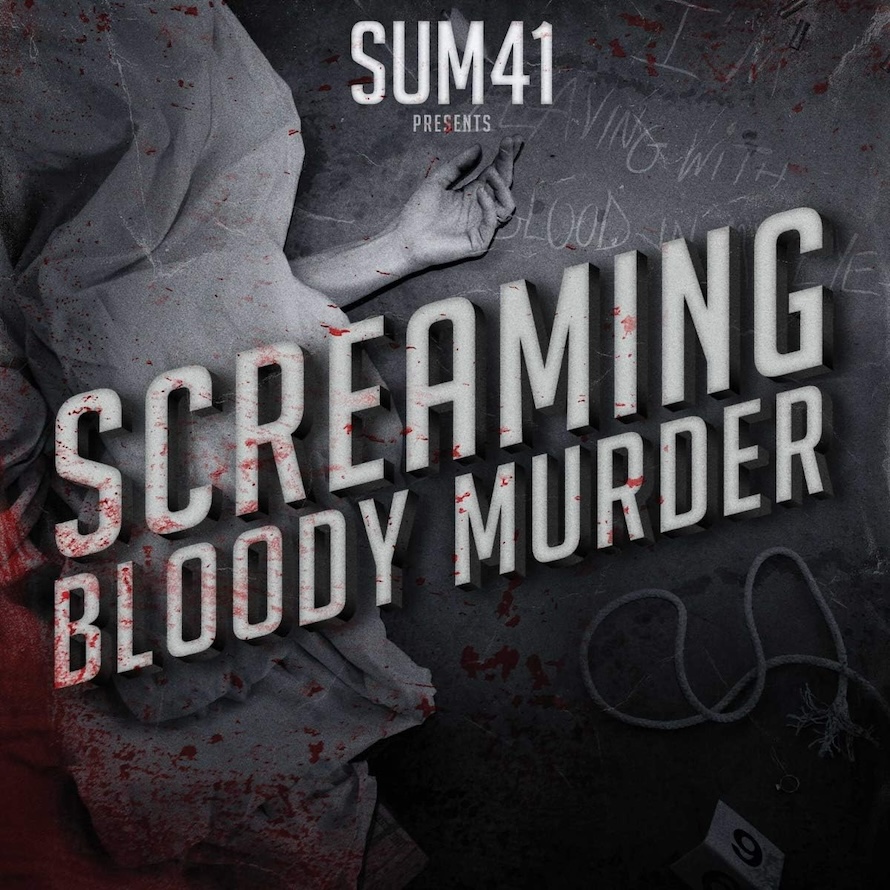
Every band has their hot mess album, and this is definitely Sum 41's. Brownsound had decided to leave the band at the end of the Chuck album cycle, and Whibley was dealing with growing alcoholism and the fallout of his divorce with Avril Lavigne during this time (as detailed in his memoir, Walking Disaster). According to Whibley, Cone and Stevo were busy partying hard and drinking too much themselves. This darkness is all certainly present on Screaming Bloody Murder. In recent interviews, the band described their label's increasing ambivalence towards rock music, instead going all-in on pop and hip-hop, which were dominating the charts.
This tension — with their label as well as with their own demons — rears its ugly head on Screaming Bloody Murder. Although there are some decent songs on the album, many of them sound like sonic copies of other artists. At its best, the militaristic drum patterns are reminiscent of My Chemical Romance on "Screaming Bloody Murder" and "Holy Image of Lies"; at its worst, "Time for You to Go" plays like a bad Foo Fighters cover song. While still experimenting with other genres — rockabilly on "Baby You Don't Want to Know" and plucky gothic rock on "Blood in My Eyes" — the newly pared-down three-piece don't deliver on this mixed record.
8. Underclass Hero (2007)
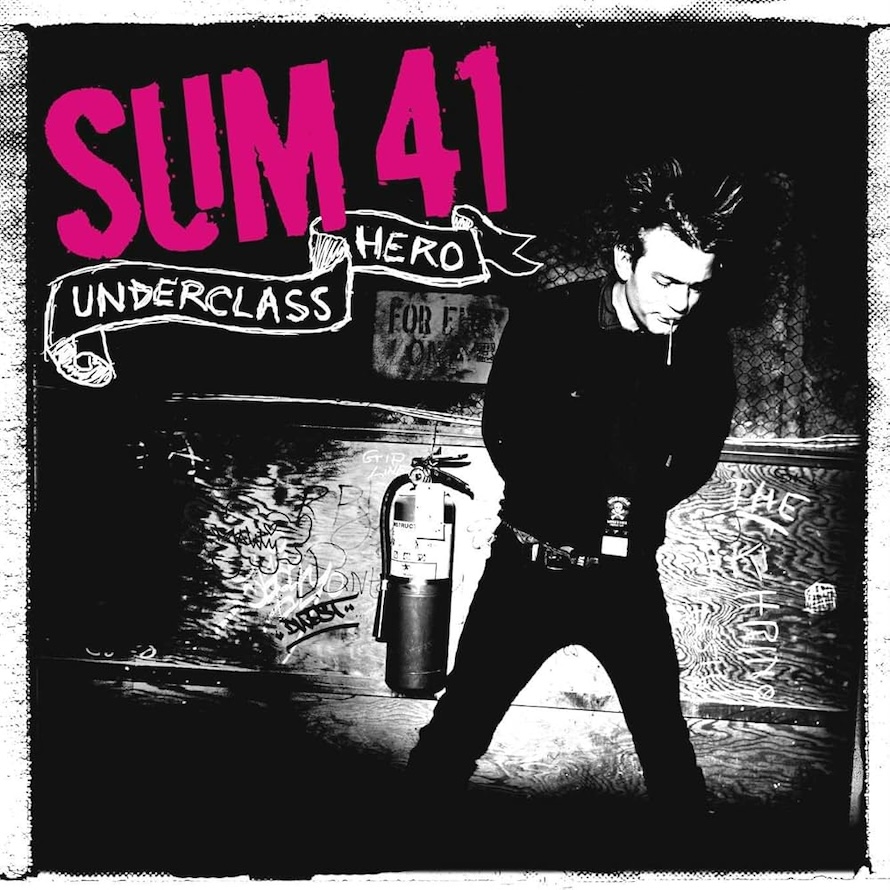
Beloved by diehard Sum 41 fans, Underclass Hero comes across as Whibley's solo project, especially given the band's lineup: Whibley, Stevo and Cone were the only remaining founding members, and their roles are downplayed on the record. This paves the way for Whibley's move into emo pop, and is somewhat of a throwback to the pop-punk success of All Killer No Filler.
There are plenty of emotionally charged lyrics, and some strong songs like "Dear Father" and "So Long Goodbye" that explore themes of heartbreak, absence and dissolved relationships. Underclass Hero also features "With Me", a tune that still earns full-on singalongs during stadium tours. It's a good song with memorable lyrics, but with a generic pop progression, it doesn't leave as strong an impression as other similar hits.
The lack of Brownsound on vocal harmonies makes something feel missing in the musical makeup of Underclass Hero. With Whibley stepping up to fill in the missing pieces, the end result is an album with a lot of repetition and songs that feature the same musical notes as others in their catalogue.
7. Order in Decline (2019)
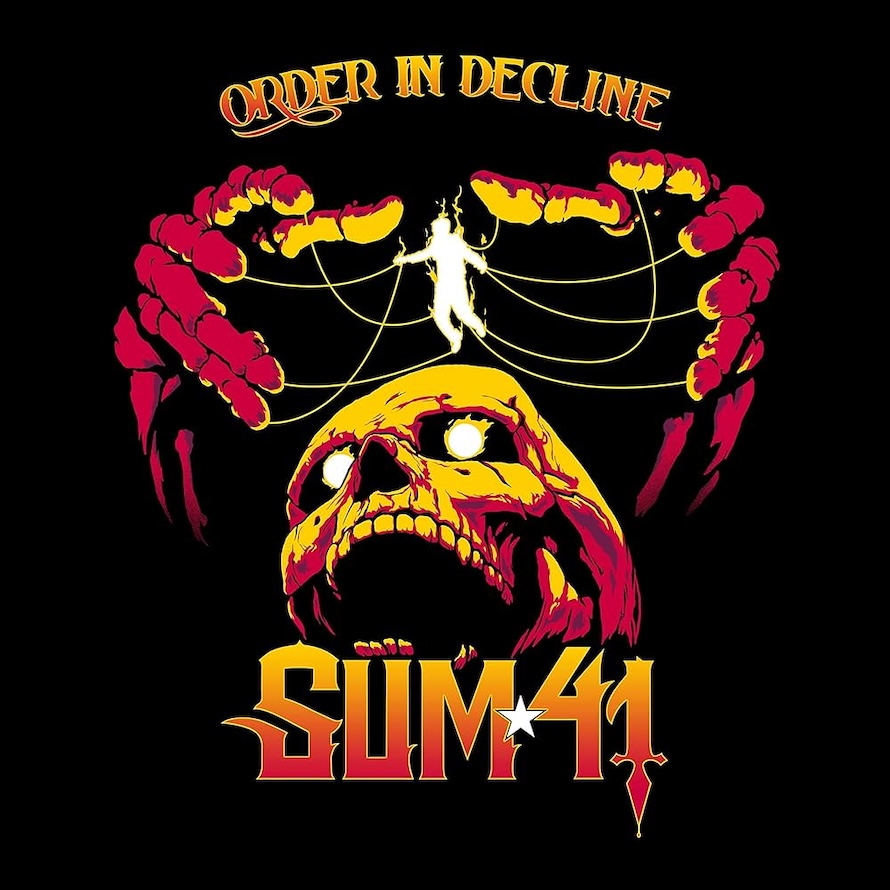
Perhaps chalk it up to the COVID-era lull, but Order in Decline didn't quite make the splash Sum 41 intended it to. The second of two albums released through independent label Hopeless Records, Order in Decline is a strong follow-up to 2016's 13 Voices, and the band described it as their heaviest and most aggressive to date. That's certainly true of songs like "Out for Blood" and "The People Vs…," with strong guitar solos from Browsound and equally thrilling vocal performances by Whibley.
Though all band members are technically proficient on the album, there's something forgettable about the arrangements, or maybe it's the similar themes to 13 Voices. A well-written piano ballad in "Never There" stands out as one of Whibley's best songs, with a tasteful solo from Baksh. While well-put together and sonically cohesive, the record doesn't stand out amongst the riskier entries in the band's catalogue.
6. Half Hour of Power (2000)
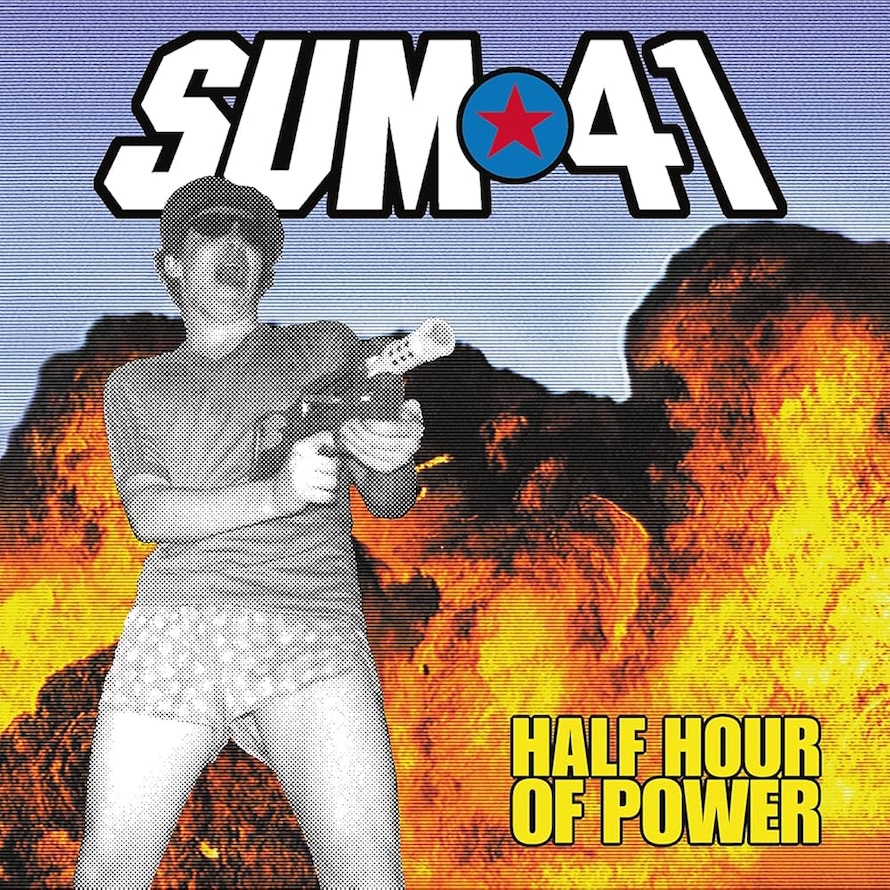
Teenage rebellion is perfectly encapsulated on Half Hour of Power, billed as an EP but considered by many to be the band's debut studio album. The cover of the record features Stevo holding a Nerf gun while an explosion erupts around him — that chaotic teenage energy carries throughout, with singles like "Summer" and "Makes No Difference" shining as near-perfect skate punk anthems. There is a youthful feel to Half Hour of Power — maybe because band members were fresh out of high school and hungry to make their mark on the industry.
Though not as technically proficient as later albums, Stevo's drumming is a real standout on the record, especially on his solo track "32 Ways to Die." The record laid the groundwork for Sum 41's experimentation with heavy metal sounds later in their career, with "Grab the Devil by the Horns and Fuck Him Up the Ass" and "Ride the Chariot to the Devil" containing clear Iron Maiden influences. With a collision of unexpected genres (even ska, as seen on "Second Chance for Max Headroom"), Half Hour of Power was equally ambitious and unexpected. It's no wonder the EP grabbed the attention of record labels beyond hometown Ontario, becoming the record that skyrocketed Sum 41 to the limelight.
5. 13 Voices (2016)
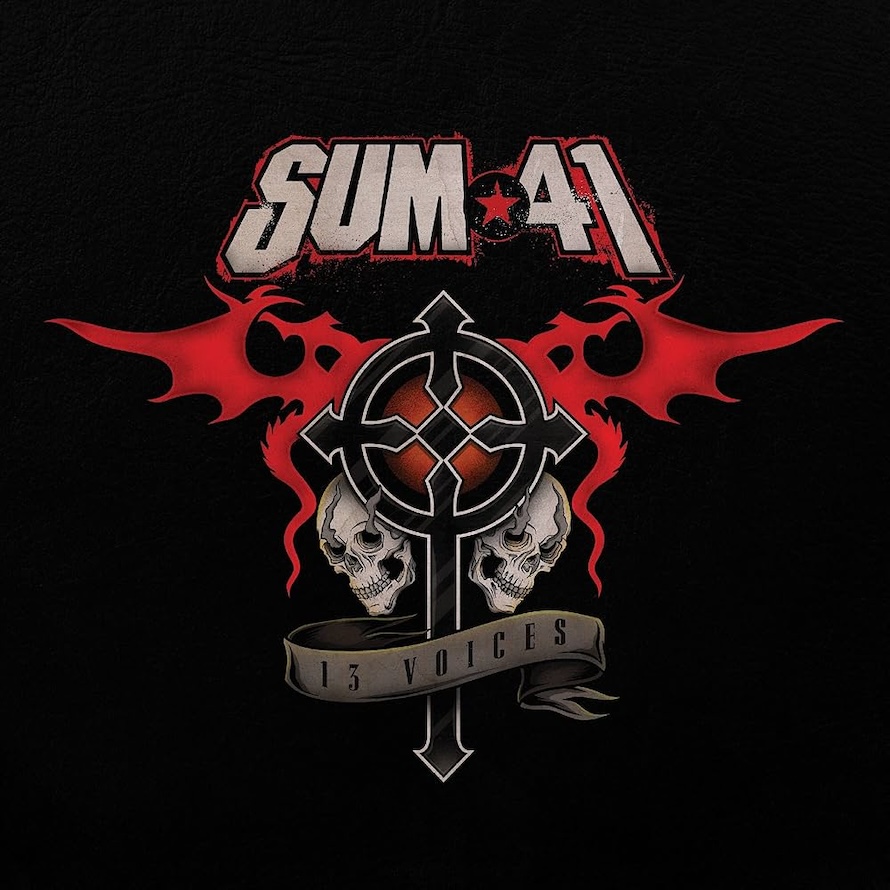
The unexpected 13 Voices is one of the strongest entries in the band's discography. With the return of Brownsound, who left the band following 2004's Chuck and returned after a long hiatus in 2015, 13 Voices marks the clear beginning of Sum 41's redemption arc. After two album flops in Underclass Hero and Screaming Bloody Murder, the band were champing at the bit to revisit the spotlight.
They managed to do just that on 13 Voices, a well-put-together return to form for Sum 41, who, as a newly minted five-piece with Frank Zummo on drums and Tom Thacker on guitar, presented the most cohesive version of themselves yet.
A fusion of metal and radio-friendly pop-punk, 13 Voices was the hardest record to date for the band: tracks like "A Murder of Crows" and "There Will be Blood" are theatrical and cinematic, with orchestral violin notes, anthemic choruses and ripping guitars. There are strong Metallica and Iron Maiden influences throughout, and the band are open to just letting those notes shine on tracks like "13 Voices." Other tracks like "Goddamn I'm Dead Again" are firmly in the pocket, highlighting 13 Voices' strength as a comeback record with new band members simply enjoying jamming out together. Although Stevo's absence is felt, 13 Voices represents a return to form and a reassertion of the band as a force to be reckoned with.
4. All Killer No Filler (2001)
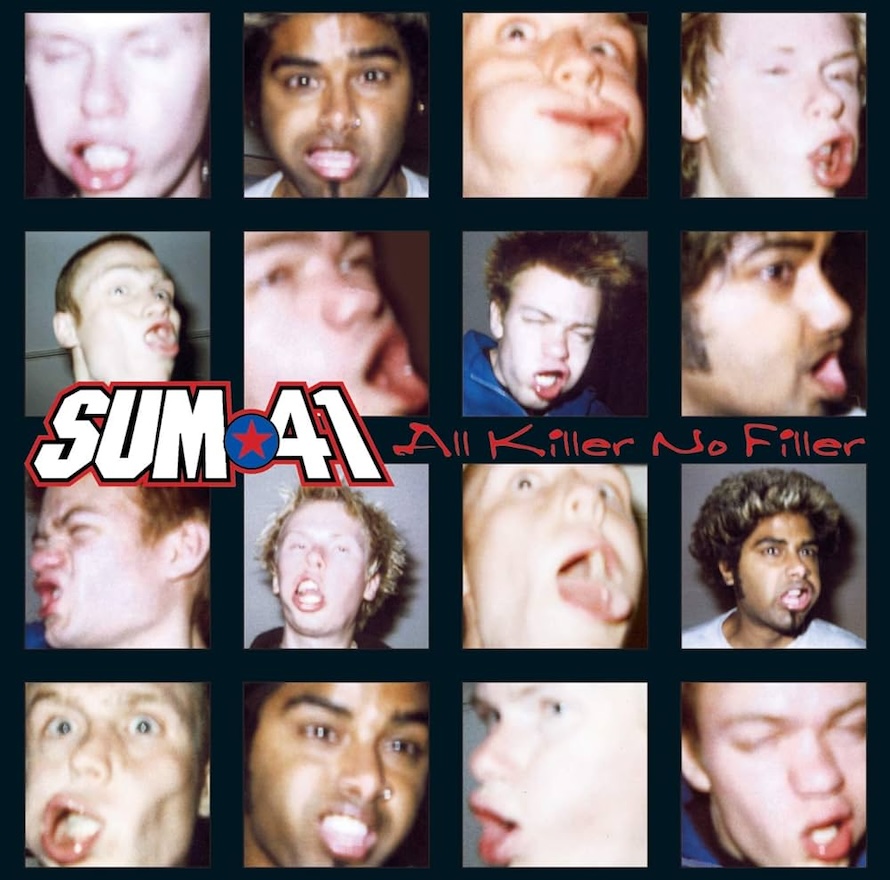
Canada's answer to the California skate-punk craze, for many Sum 41 fans, this is the record that soundtracked their youth. Where Half Hour of Power was raw and unpolished, All Killer No Filler was produced by savant Jerry Finn, who is responsible for pivotal pop-punk records like blink-182's Enema of the State. The result is meticulously put together, with a driving energy that defined Sum 41's signature sound, making All Killer No Filler arguably the most recognizable (and commercially successful) album in the band's catalogue.
The record contains some of the tracks that defined Sum 41, and still does to this day — the brilliant punk-hop mashup of the defiant "Fat Lip" was a major turning point in the development of pop-punk. "In Too Deep," "Motivation" and "Handle This" are emotionally impactful while still maintaining a radio-friendly and accessible approach that helped popularize the genre for years to come.
This is absolutely one of the defining pop-punk records — a breakout album that caused waves in the scene when it first emerged. The enduring strength of these songs is evident in the band's most recent tours, where the album's singles are dutifully shouted back by fans of all ages. Two decades later, All Killer No Filler will still leave you with a fat lip.
3. Heaven :x: Hell (2024)
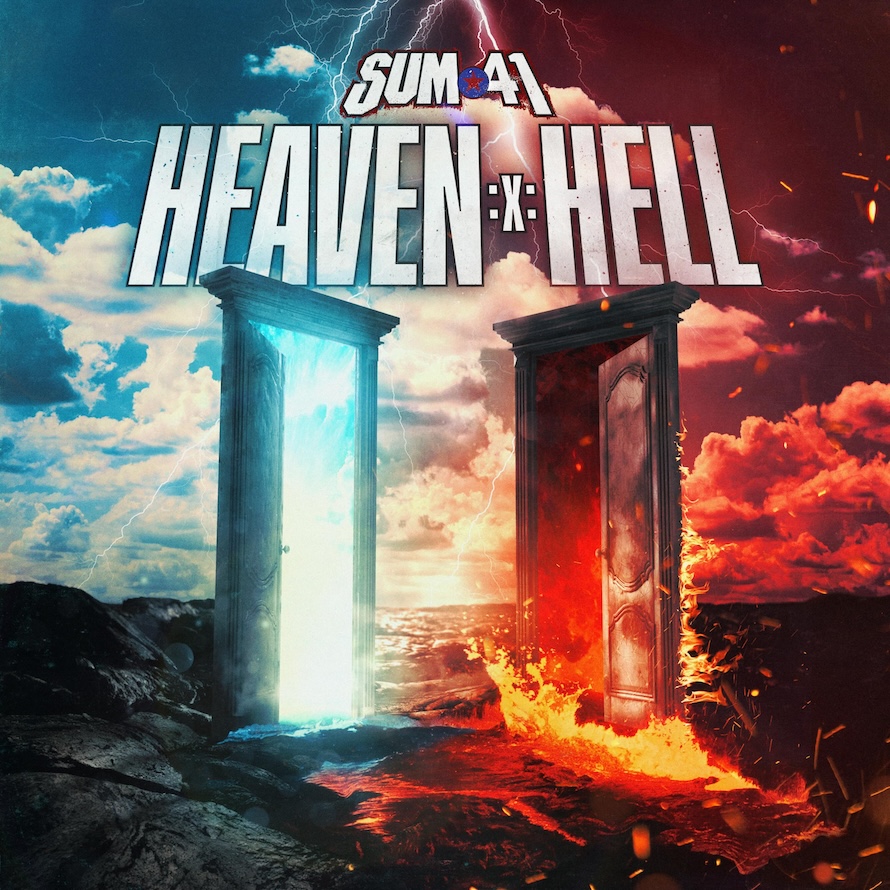
There's a reason Whibley refers to Heaven :x: Hell as the band's best record. With Brownsound's guitars at their peak and the harmony of Thacker and Zummo fully realized, Heaven :x: Hell represents Sum 41's in their most evolved form.
The double record is the perfect nod to Sum 41's vast musical history, exploring pop-punk themes on side Heaven and delving into heavier sounds on side Hell. With the release of Whibley's memoir Walking Disaster and its bombshell allegations against former producer Greig Nori, it's impossible to listen to the Hell side of this record and not think about Whibley's book. Brownsound's guitar skills are at their peak on this half of the album, as he performs some of the most outstanding solos of his career, while Whibley taps into the rawest sources of pain. His lyrics are courageously honest and equally heartbreaking: "Your lies are a disease and you've been bleeding black," Whibley cries on "Over the Edge," following up with the scorching "House of Liars" which showcases his commitment to resurrection, "Well, time keeps reversing / The sins of the past / What seemed like the worst thing / Will become unmasked."
The record addresses themes of abuse and coercive control, using the punk genre to elevate important issues that resonate beyond the music industry while conveying total mastery of intricately produced anthems.
2. Does This Look Infected? (2002)

An "infection" is an apt word to describe the frenetic energy that had taken over iPod-clad teenagers in the early 2000s. The appetite for pop-punk was on the rise, with major labels keen to profit off the emerging trend. Musical acts like blink-182 and Green Day were bigger than ever, and the release of albums like Avril Lavigne's Let Go, Taking Back Sunday's Tell All Your Friends, and New Found Glory's Sticks and Stones followed. In many ways, 2002 was the year that made pop-punk, solidifying its success as a musical trend that would continue throughout the early 2000s. Does This Look Infected? was Sum 41's entry in the mix: a driving pop-punk record that would go on to become one of the band's best-loved in their catalogue.
The cover art, showing zombie Stevo pointing to an open wound on his head, conveys the many themes of discontent on the record, tackled through the lens of materialism, hatred, war, inner demons, suicide and HIV. These themes permeate Does This Look Infected?, capturing the angsty disillusionment of youth in the political aftermath of 9/11, as Sum 41 navigate global themes against a backdrop of guitar-shredding and headphone-blaring punk rock.
Does This Look Infected? is the pivotal moment that represented a transition in Sum 41 from pop-punk to a more aggressive strain of punk. It's the blend of heavy and thrash metal with classic punk that strengthens the record, representing the first time they had started experimenting with their signature blend of punk with heavier genres.
The energy of this record is fully encapsulated in a sound bite from the start of "A.N.I.C": Stevo bangs his sticks, counting in the band as Whibley plays a wrong note and everything falls apart. He screams "FUCKING SHIT!" at full volume before the band launches straight into a song that is delightfully and shit-kickingly punk rock. "You're an asshole / You make me sick!" Whibley belts out, and the track cuts — the perfect interlude for a one-tempo record that goes at full speed and never slows up.
Stevo's frenetic drumming is the foot on the gas that drives everything forward, riding the edge of the cliff on "Mr. Amsterdam," where his talent is on full display alongside Brownsound's foray into screamo harmonies. Whibley's lyrics are critically sharp on tracks like "My Direction," which addresses teen suicide and brings attention to important issues amongst disenfranchised youth. "The Hell Song," meanwhile, opens with a recording of a band member hocking a loogie, as Sum 41 mature into the most comfortable version of themselves yet: disgustingly and deliciously punk rock.
1. Chuck (2004)
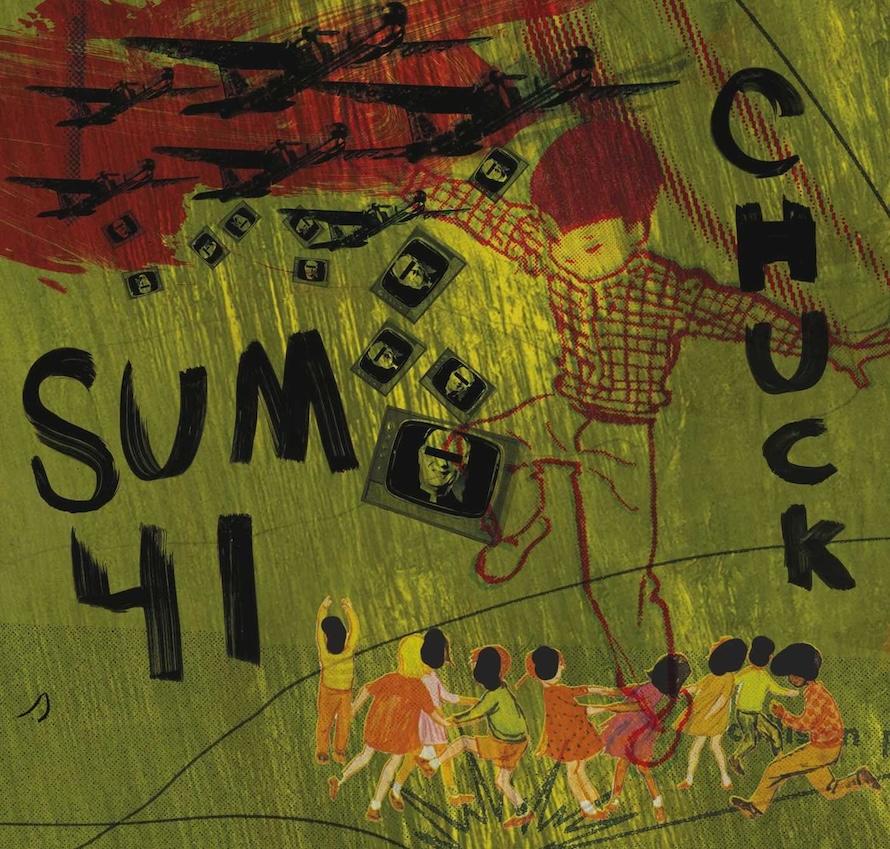
In early 2004, Whibley had finished writing 12 of the songs that would make up the band's upcoming JUNO Award-winning album, Chuck. They spent the next few months laying down drum tracks, guitars and vocals for the album at Sound City Studios in L.A., followed by sessions in their hometown of Toronto. It was at this point that Whibley and Brownsound started to embrace the metal sounds that would later dominate the band's music, as well as poignant lyrics that aligned nicely with the transition to emo that was dominating the charts.
After laying down the majority of the album, the band took an opportunity to work more closely with the charity organization War Child. In May 2004, they were pitched on a two-week trip that would include interviews with survivors, former child soldiers, victims of sexual violence and peacekeepers in the Democratic Republic of Congo, which had been ravaged by two decades of war in the fallout of the Rwandan genocide. They agreed, and were sent into the country via propeller plane in the early 2000s.
As seen in the 2005 documentary Rocked: Sum 41 in Congo, the musicians were severely out of their element in a global conflict that they largely didn't understand. Abruptly and unexpectedly, their visit was interrupted by a barrage of new fighting, and the film depicts the band's near-death escape from the area. Volunteer Canadian U.N. peacekeeper Charles "Chuck" Pelletier assisted 42 evacuees, including the members of Sum 41, in escaping unscathed. In 2006, he was awarded a Medal of Bravery by the Governor General of Canada; the band also awarded him the title of their upcoming album, Chuck.
These experiences lay the groundwork for the atmospheric themes and tone of Chuck. Key songs like "We're All to Blame" were written by Whibley after returning home, reflecting on the brutality of the incident and the greater geopolitical implications of continued conflict in Congo.
The injustice of global hegemony is outlined by Whibley in "We're All to Blame," with an emphasis on the West's complicit participation in this system, evident in lyrics like, "Supersize our tragedies / Bought in the land of the free." Chuck represents Sum 41 in their most authentic form, utilizing the punk genre as a pressure point to bring awareness to systemic injustice. Jocz's drumming mimics the sounds of firing machine guns, while anthemic back-and-forths between Whibley and Baksh rise to a boiling point, upping the stakes.
Amongst it all, there are a few hits that stand out as some of Sum 41's best: the reverse-speed production flairs of "Some Say" are memorably nostalgic, while the devastating vocal performance in "Pieces" reveals universal truths about transformation and continued survival. Cobain-esque guitar riffs on "Angels with Dirty Faces" and the alt-rock influences apparent on the acoustic intro of "Slipping Away" give the album a musical dynamism that exceeds the band's previous records. Baksh embraces his new and improved guitar skills and a penchant for experimentation on "Open Your Eyes," with a Tom Morello-inspired solo.
Behind the technical proficiency, there's a rugged intensity that's amplified by the album's socially conscious themes, making Chuck a multi-layered tapestry that takes Sum 41's music beyond themselves.
